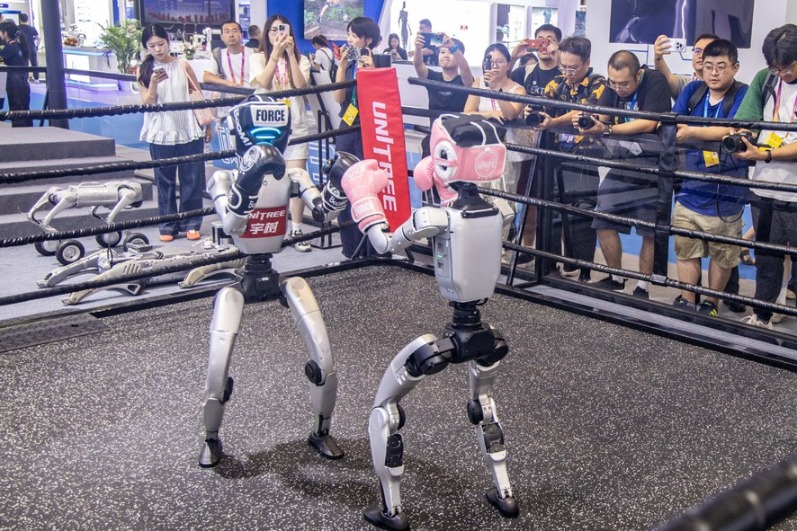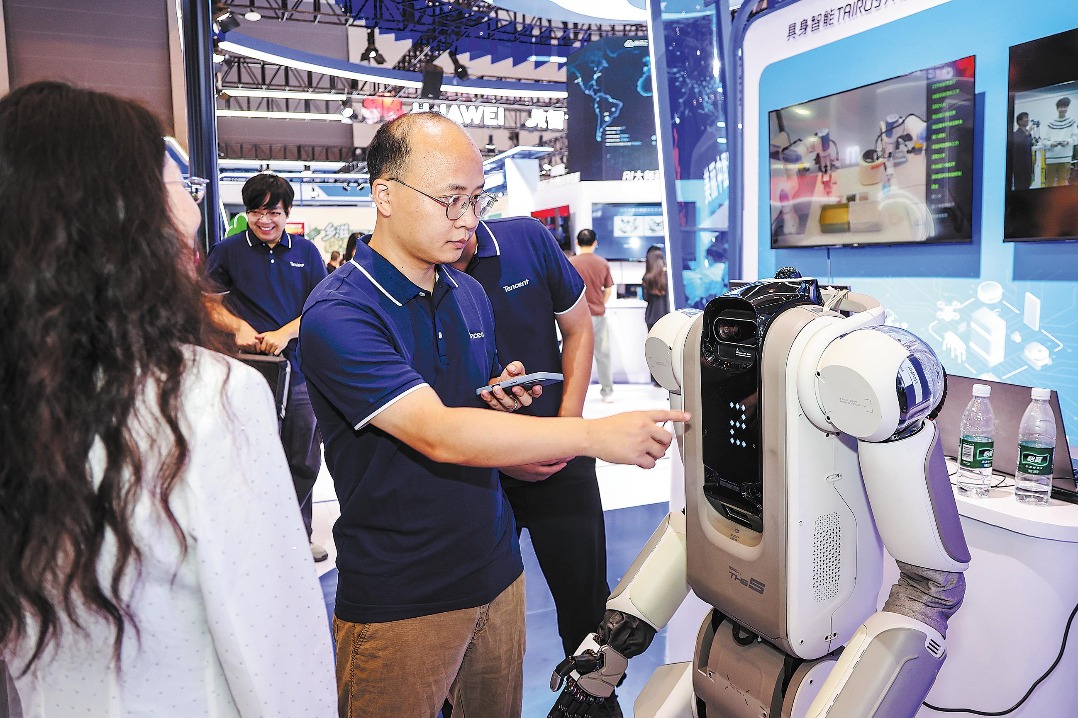Country hastens brain-machine interface R&D


BEIJING — A monkey with soft electrode filaments implanted in its brain controls an isolated robotic arm to grasp a strawberry by simply using its "thoughts".
This innovative achievement in the application of China's brain-machine interface technology was unveiled at the 2024 Zhongguancun Forum (ZGC Forum) in Beijing late last month.
The NeuCyber Array BMI System, which was independently developed by Chinese scientists, fills the gap in high-performance invasive BMI technology in China, said Luo Minmin, director of the Chinese Institute for Brain Research, Beijing, which co-developed the system with NeuCyber NeuroTech (Beijing) Co Ltd.
With the continuous development of technologies such as neuroscience, computational electronics and medicine over the years, BMI — as a frontier technology of human-computer interaction — has been a major force leading the latest round of scientific and technological development along with industrial change.
The innovative progress of multidisciplinary approaches and technologies is accelerating the growth of the BMI industry, and China is becoming not only a major innovation hub, but also a target market for BMI technology, according to experts at the forum.
Currently, BMI technological innovation is being used in about 40 countries and regions, with nearly 80 percent of the results emerging in the past decade, said Gu Xiaosong, an academician with the Chinese Academy of Engineering.
China is among the countries with the largest number of BMI scientific research projects, with a large scale and fast growth of scientific research output, and its invention patent applications involving BMI account for more than half the global total, Gu said.
"In the past 20 years, BMI technology has developed rapidly, and its application fields are gradually expanding," said Zhao Jizong, an academician with the Chinese Academy of Sciences.
Mainly used in the medical field at this stage, BMI technology can bring new solutions for the diagnosis and treatment of nervous system conditions, such as epilepsy, Parkinson's disease, depression, paralysis, stroke, Alzheimer's disease, sleep disorders and autism.
Industry insiders believe that BMI technological innovation, rich clinical resources and huge demand for brain disease treatment are the advantages driving the development of China's BMI industry.
Hong Bo, a professor at Tsinghua University, said China needs to seize the opportunity by improving its strategic layout and accelerating the innovation of BMI technology to promote its industrial development.
The widespread use of BMI technology is translating into huge market potential.
According to McKinsey & Company, in the medical field alone, the potential global market size of the BMI industry is expected to hit $40 billion between 2030 and 2040. In addition, BMI has great potential in markets such as healthcare and entertainment.
"BMI technology has broad development prospects and huge market potential in many sectors, and is a typical representative of future industries," said Jiang Juncheng, deputy director of the Beijing Municipal Bureau of Economy and Information Technology.
As a rising global sci-tech innovation hub, Beijing — which is strong in BMI R&D — has made major breakthroughs in recent years in the analysis of cognitive brain principles and major disease research, with the influence and scale of BMI playing a leading role in China.
Beijing has recently charted a roadmap for accelerating the development of the BMI industry. By 2026, it will achieve breakthroughs in core BMI technologies and cultivate a number of leading enterprises. By 2030, with an independently well-developed BMI technology system, hundreds of small and medium-sized enterprises related to the sector will be nurtured in the capital city, forming an industrial cluster.
According to the plan, Beijing will strengthen the integrated innovation of key technologies, enrich the supply of BMI products and build a coordinated development of industrial ecology. It will promote the demonstration application of BMI in five fields, namely medicine, healthcare, industrial safety, education and sports, and smart life.
Xinhua



































